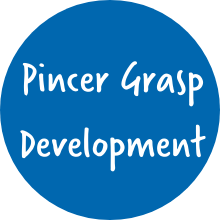Viva La Musica! DIY Cinco De Mayo Instruments!
- Patria Lincoln Posted On May 4, 2023 | Social-Emotional Learning
Celebrate Cinco de Mayo this year with some live music! The kids will love crafting these simple instruments, opening up discussion about the holiday and its origins. It is a common misconception that Cinco de Mayo is celebrated as Mexico’s independence day. In Mexican culture, May 5 actually marks the Mexican army’s unlikely victory over the French forces of Napoleon III in 1862, at the Battle of Puebla. In fact, the residents of the state of Puebla are really the ones who celebrate the holiday the most – even more than the rest of Mexico. They party with traditional Mexican food, dancers, and mariachi music. These wonderful sounds of celebration inspired us to make some homemade instruments. According to the Brain and Creativity Institute at University of Southern California, music experiences in childhood can actually accelerate brain development, particularly in language and reading skills. Down the road, learning a musical instrumental at an early age can actually improve mathematical learning and increase SAT scores. Sounds good to us, so let’s get musical! Here’s what you’ll need to make you own little Cinco de Mayo band.
Festive Tambourine
What You'll Need:
- 2 paper or plastic plates
- Decorations (stickers, markers, or paint)
- Ribbon
- Hole Punch
- Craft Jingle Bells
- Scissors






- Using your paint or stickers, decorate the outside of your tambourine. Be colorful and creative!
- Next, match the plates up so the bottom part of the plate faces out. Punch 5-6 holes around the plate’s circumference, making sure your bottom and top plates match up.
- Cut the ribbon as long as you’d like. Longer ribbons always seem to add more drama! Then lace the ribbon through the jingle bells.
- Loop your ribbon around the holes punched in the plates, securing it with a double knot.
- Shake away! These small bells make a joyful sound!




Beating Drum
What You'll Need:
- Clean Tin Can (be aware of sharp edges!)
- Baloon
- White Duct Tape
- Decorative Tape
- Two #2 Pencils
- Scissors






- First, cut the balloon at the base of the “stem”. You’ll need lots of balloon material to cover the wide opening of the can.
- Stretch the balloon over the tin can. Tape the perimeter.
- Then finish the whole can with the white tape, and add decorative tape if you so choose.
Shaky Maracas
What You'll Need:
- Plastic Easter Eggs
- Plastic Spoons
- Dry Rice
- White Duct Tape
- Decorative Tape
- Scissors






- Fill the plastic eggs with about 2-3 pinches of rice. Filling them too full will not allow for the fullest sound: less is more.
- Close the eggs and stick some tape around them immediately. If these crack open, you’ll have a big mess.
- Next, situate two of the spoons to “cup” the eggs on either side. Wrap the tape around the spoon. Follow the spoons’ handles down with tape, as well as the top of the egg.
- Add some decorative tape or stickers of your liking.
- Shake it up!




 Shop UK Site
Shop UK Site 


























 Build three different vehicles from just one set of mix-and-match parts with the 1-2-3 Build It! Rocket-Train-Helicopter . Chunky, easy-to-handle parts let kids build and rebuild on their own before embarking on imaginative journeys to far-off destinations—blast off to distant stars aboard a rocket, fly through the air above a make-believe city with a helicopter, or chug down the tracks toward the station with a train.
Build three different vehicles from just one set of mix-and-match parts with the 1-2-3 Build It! Rocket-Train-Helicopter . Chunky, easy-to-handle parts let kids build and rebuild on their own before embarking on imaginative journeys to far-off destinations—blast off to distant stars aboard a rocket, fly through the air above a make-believe city with a helicopter, or chug down the tracks toward the station with a train. Get ready for endless fun with our famous Mathlink Cubes! High-quality plastic cubes measure ¾” each and come in 10 bright colors. These stackable cubes are easy for little hands to connect and twist apart. Great for counting to 100 by ones and tens, grouping, and one-to-one correspondence. These cubes are also great for building, sequencing, and patterns!
Get ready for endless fun with our famous Mathlink Cubes! High-quality plastic cubes measure ¾” each and come in 10 bright colors. These stackable cubes are easy for little hands to connect and twist apart. Great for counting to 100 by ones and tens, grouping, and one-to-one correspondence. These cubes are also great for building, sequencing, and patterns! Drivers, start your learning engines! Shape, color, and number recognition skills zoom around the track, past the checkered flag, and into your toy box with the Speedy Shapes Racers from Learning Resources. Shaped like old-fashioned racing roadsters, these five colorful race-cars combine skill-building lessons about shapes, colors, and numbers with fun imaginative play opportunities.
Drivers, start your learning engines! Shape, color, and number recognition skills zoom around the track, past the checkered flag, and into your toy box with the Speedy Shapes Racers from Learning Resources. Shaped like old-fashioned racing roadsters, these five colorful race-cars combine skill-building lessons about shapes, colors, and numbers with fun imaginative play opportunities.
 Which creature will you discover? Turn your kids’ love of collectible toys into a real-world science adventure with the Beaker Creatures Reactor Pod from Learning Resources. Within each mysterious Reactor Pod lurks one of 35 Beaker Creatures. They are tiny alien travelers from five planets who’ve come to Earth in search of learning fun. To discover which creature you’ve got, drop the pod into a container of water, watch the bubbling reaction, and extract the creature within! Get your pods at Amazon!!Single Pod -
Which creature will you discover? Turn your kids’ love of collectible toys into a real-world science adventure with the Beaker Creatures Reactor Pod from Learning Resources. Within each mysterious Reactor Pod lurks one of 35 Beaker Creatures. They are tiny alien travelers from five planets who’ve come to Earth in search of learning fun. To discover which creature you’ve got, drop the pod into a container of water, watch the bubbling reaction, and extract the creature within! Get your pods at Amazon!!Single Pod - 






















